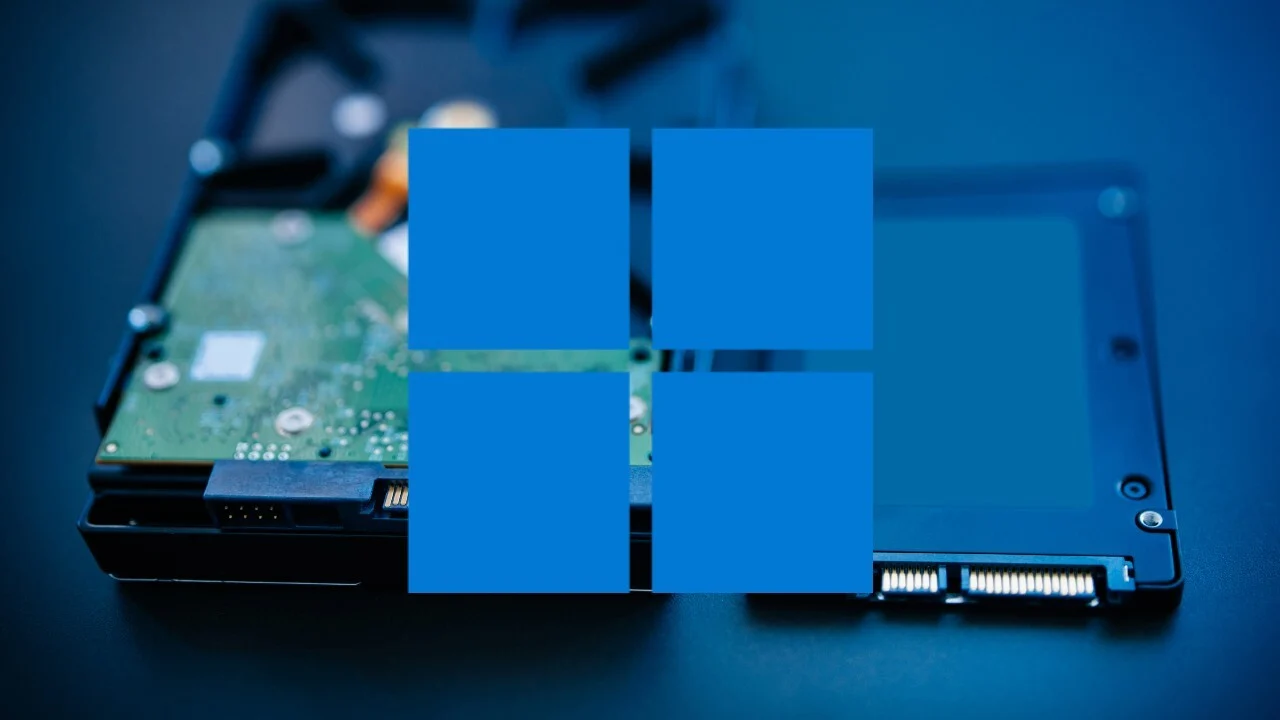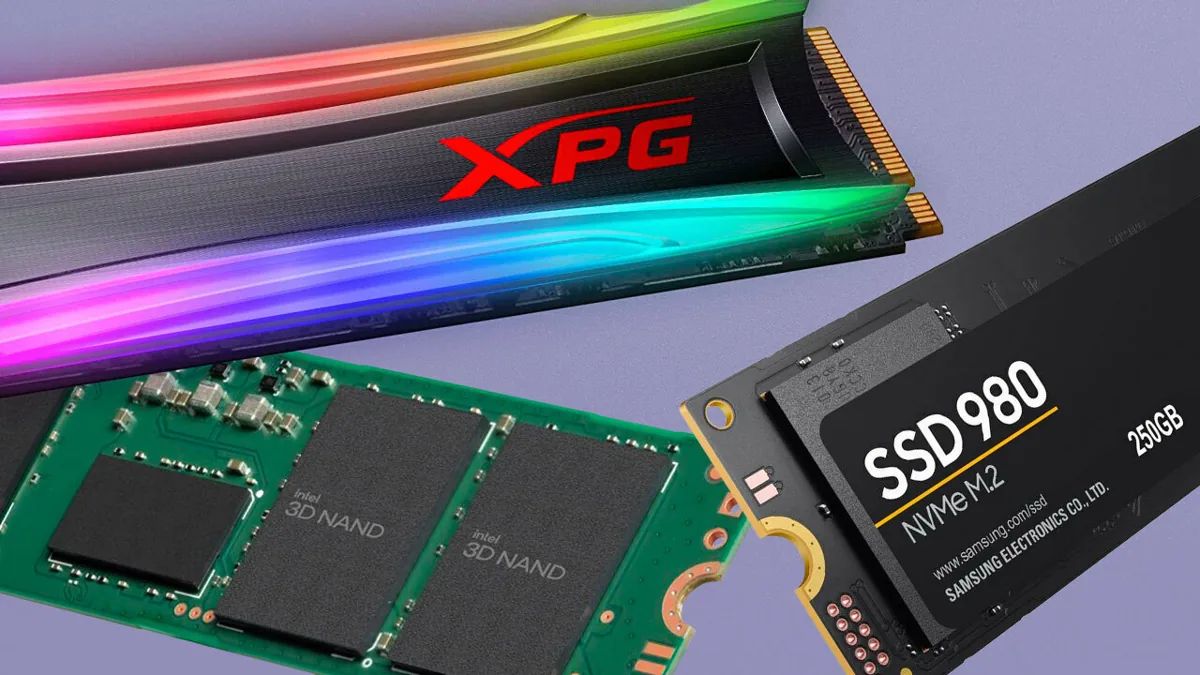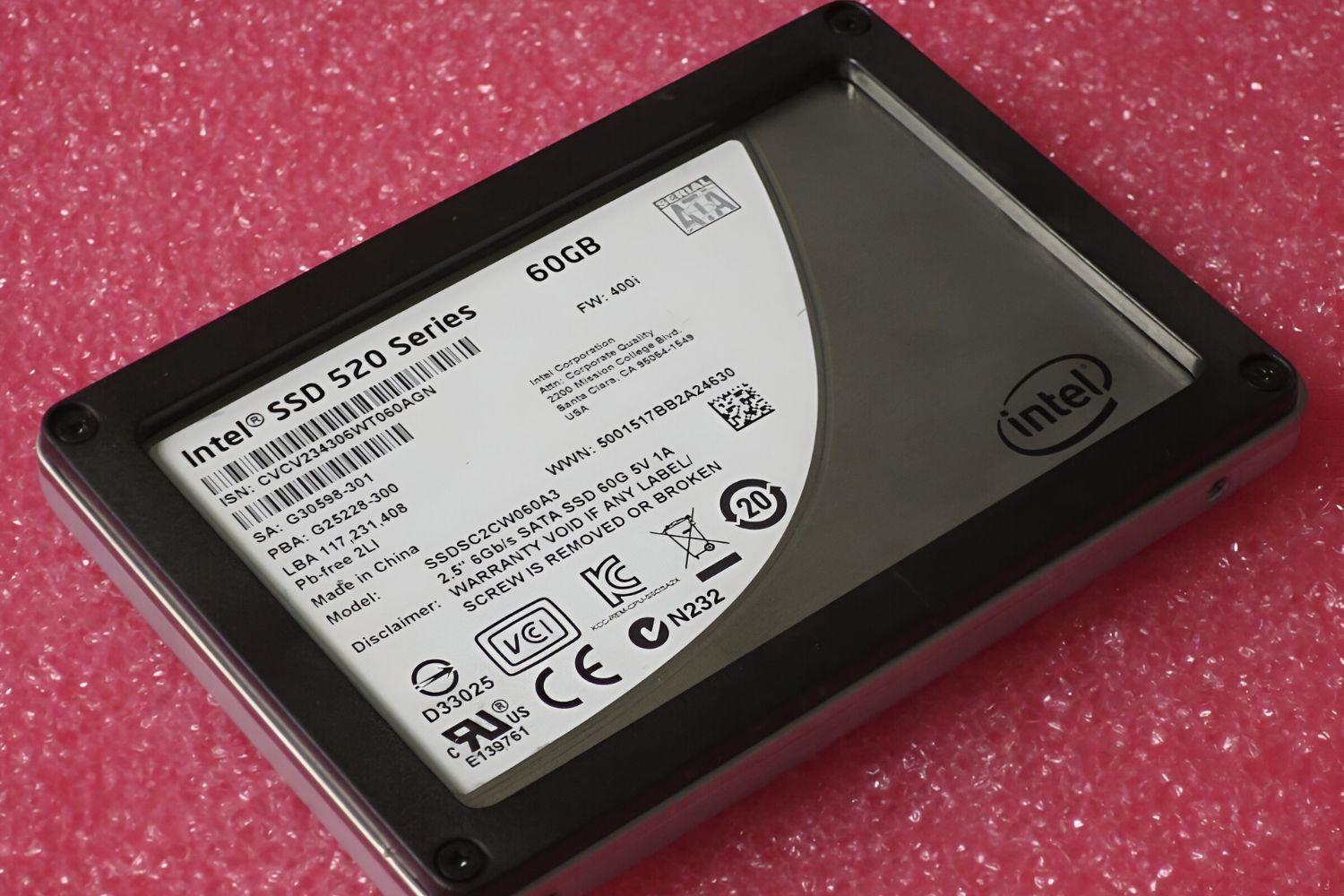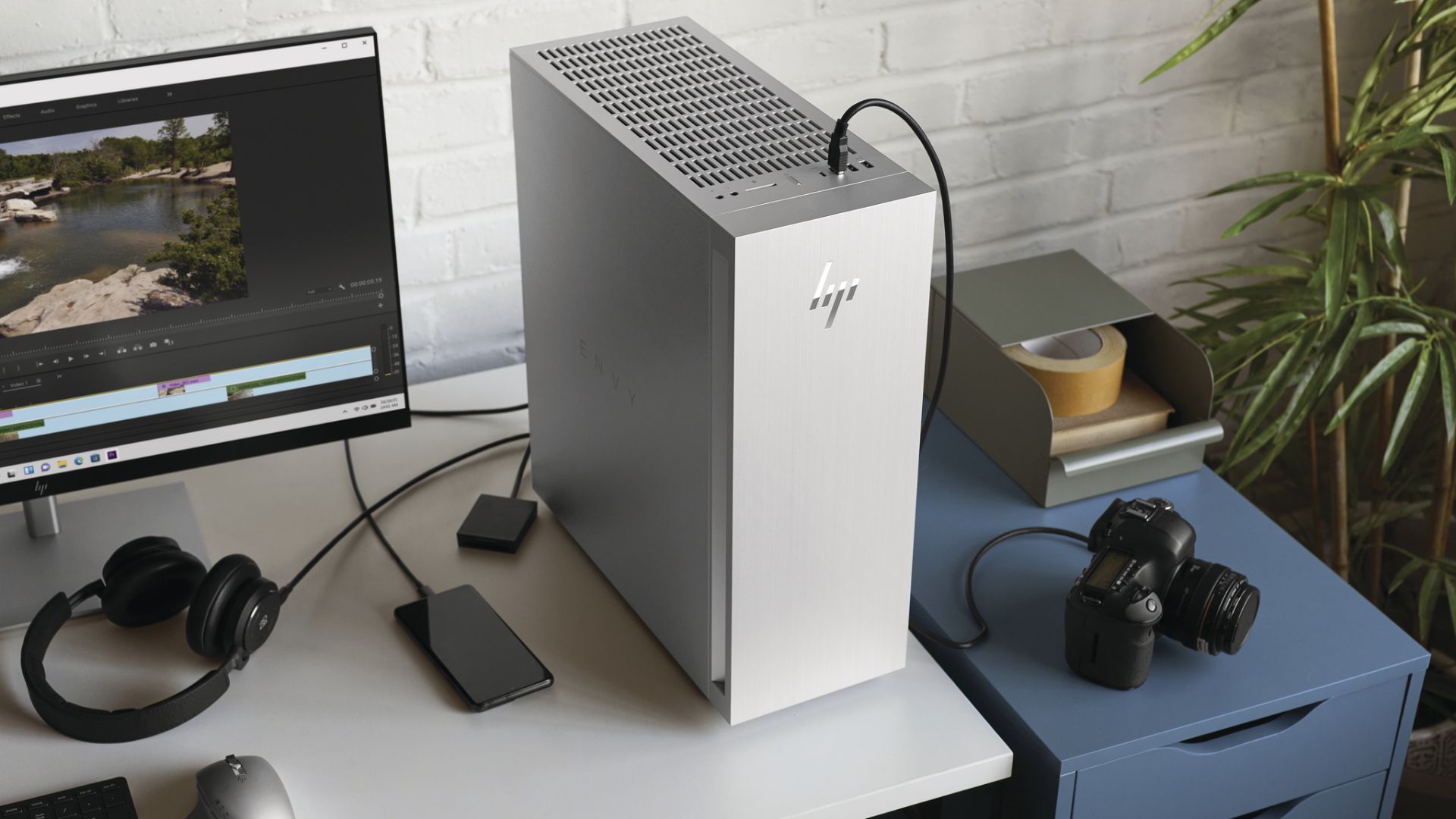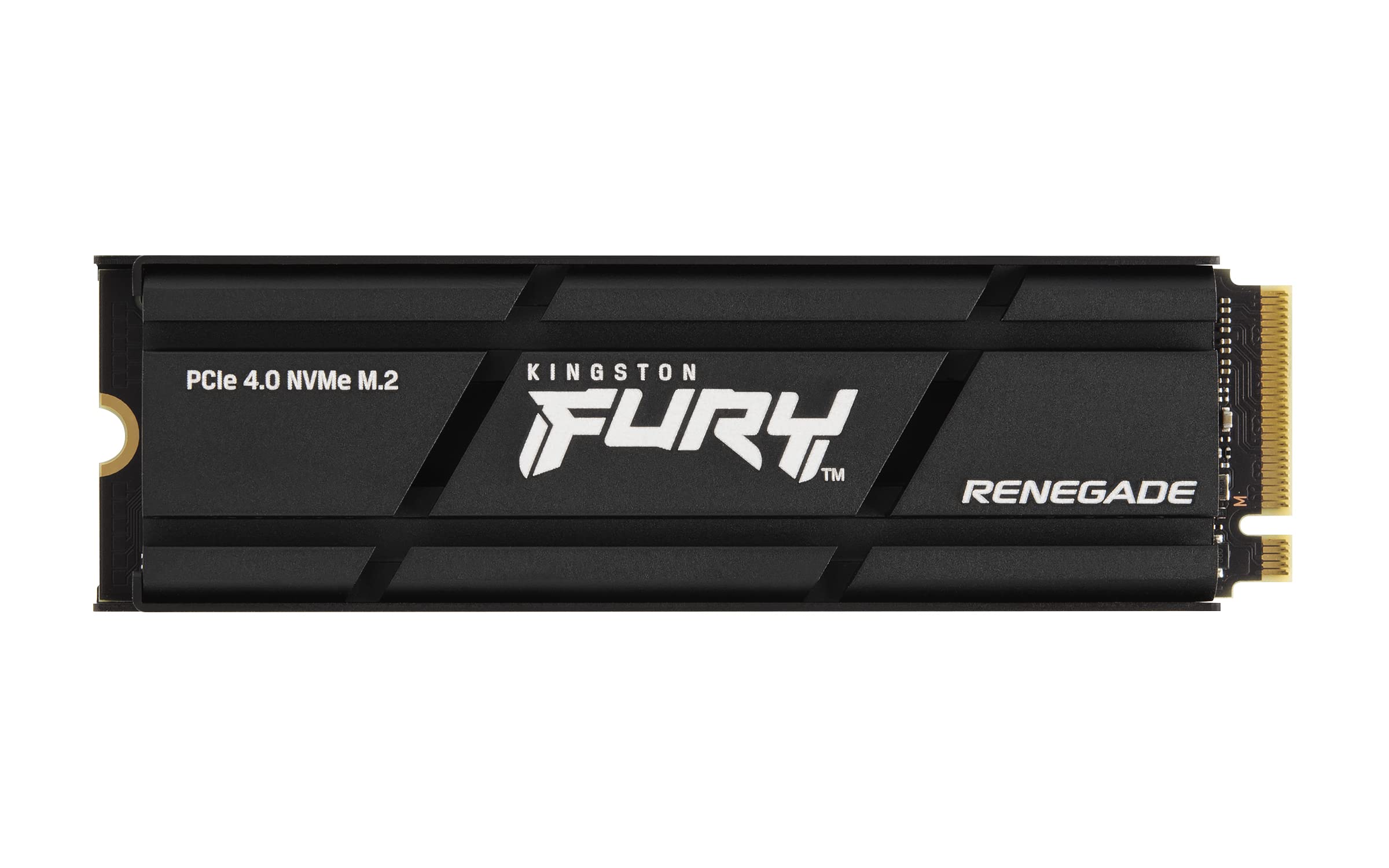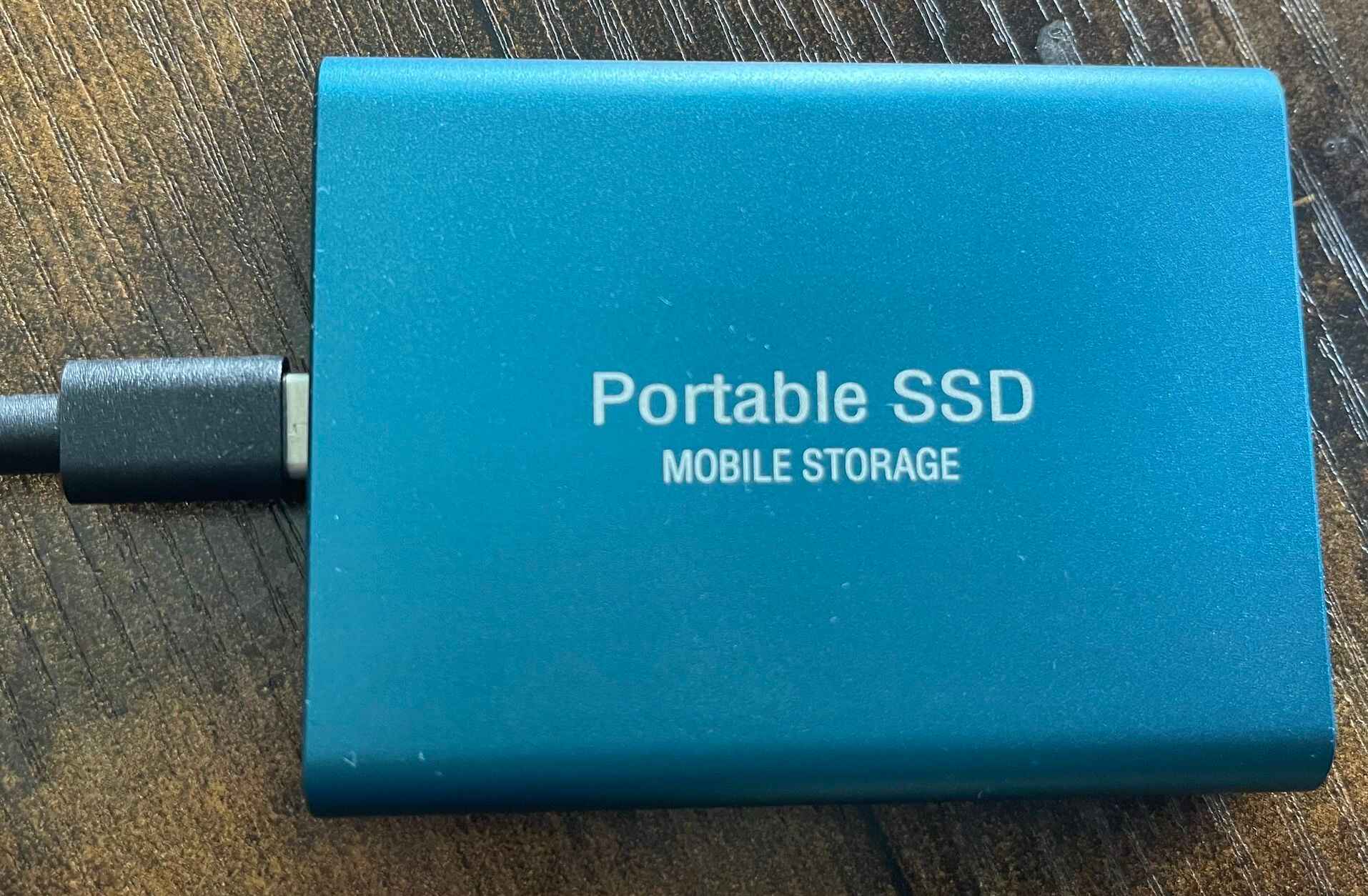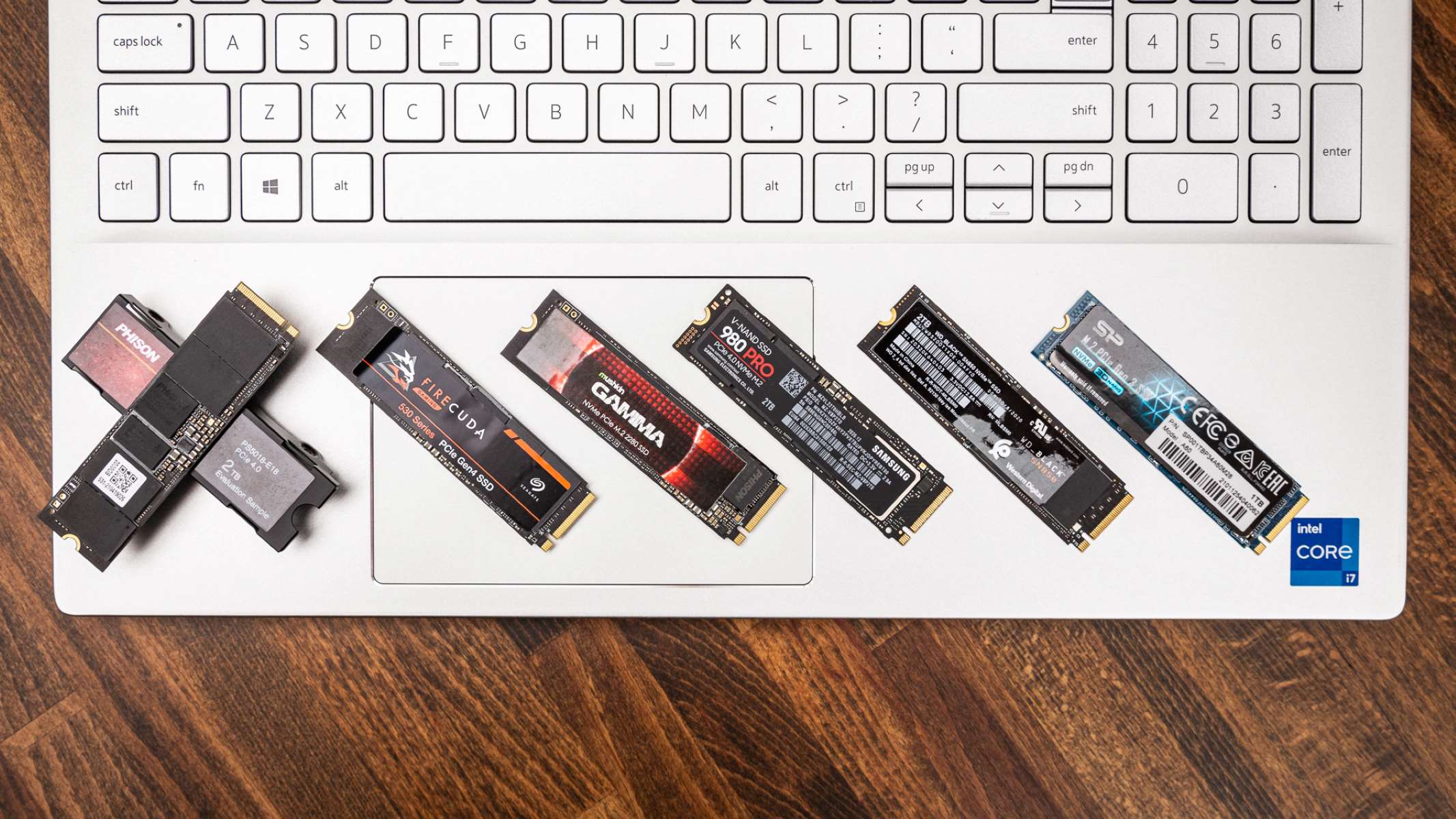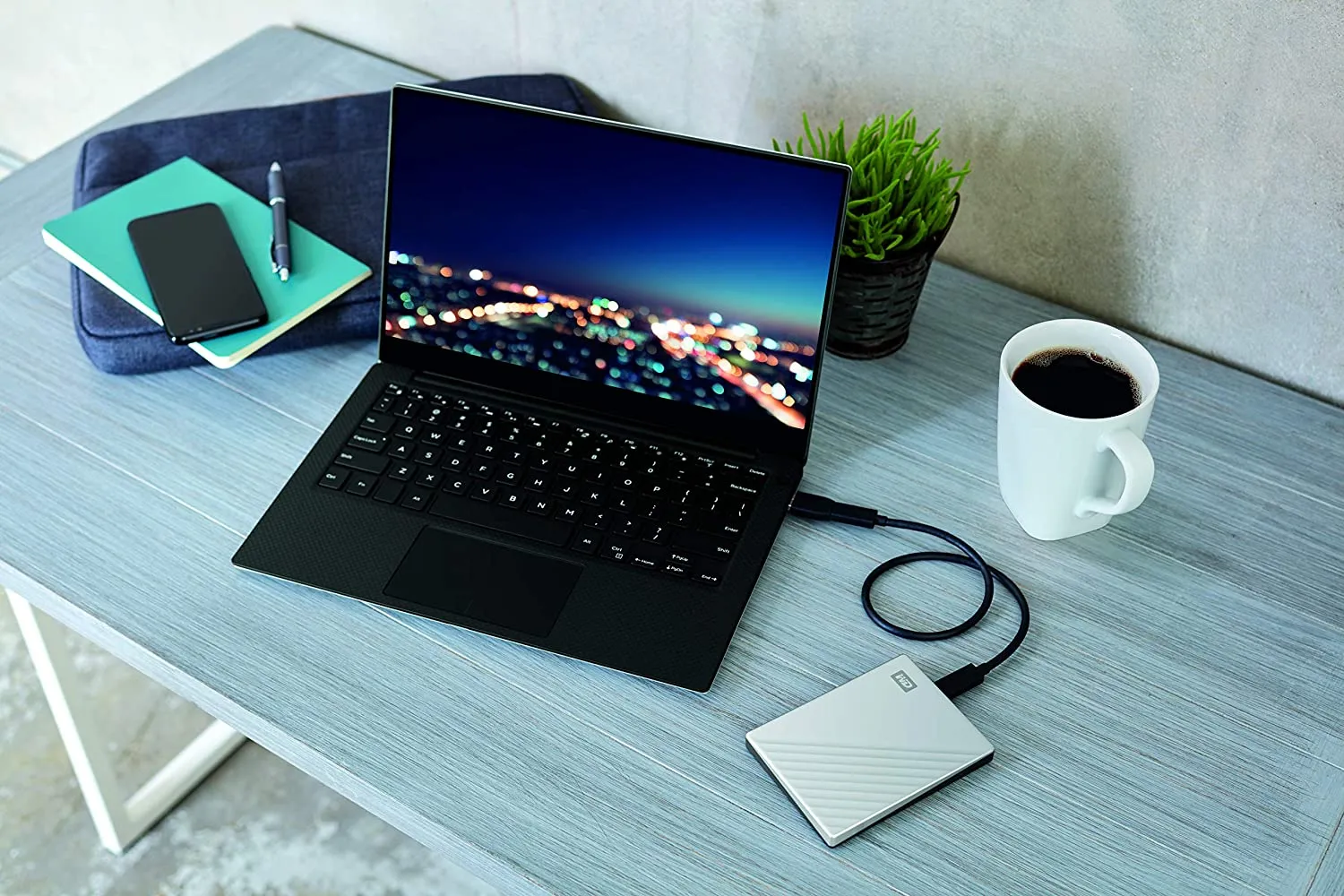Introduction
Welcome to the world of Windows 10 – Microsoft’s latest and most advanced operating system. With its user-friendly interface, plethora of features, and seamless integration across devices, Windows 10 has gained significant popularity among users worldwide. Whether you’re a tech enthusiast, a professional, or a casual user, Windows 10 offers a wide range of benefits and functionalities that cater to your computing needs.
In this article, we will explore one crucial aspect of Windows 10 – its storage requirements on a solid state drive (SSD). When it comes to storage space, SSDs have become the go-to choice for their fast read and write speeds, durability, and overall performance. As such, it is important to understand how much space Windows 10 occupies on an SSD and how to optimize its storage usage.
Before we dive into the specifics, let’s take a closer look at what Windows 10 has to offer and why it is a preferred choice for millions of users around the globe.
What is Windows 10?
Windows 10 is the latest iteration of the Windows operating system developed by Microsoft. It was released in 2015 as the successor to Windows 8.1, with the aim of providing a more streamlined and user-friendly experience for both desktop and mobile users.
One of the standout features of Windows 10 is its versatility. It is designed to run seamlessly across a variety of devices, including desktop computers, laptops, tablets, and even smartphones. This unified approach allows users to experience a consistent interface and access their data and applications across multiple devices.
Windows 10 also introduces a range of new features and improvements compared to its predecessors. The Start Menu, which made a comeback in Windows 10, combines the familiarity of the classic Start Menu with the live tiles from Windows 8, providing users with a customizable and efficient way to access their favorite apps and content.
In addition to the revamped Start Menu, Windows 10 boasts a range of productivity enhancements. Virtual desktops allow users to organize and switch between different workspaces, while the Action Center provides quick access to notifications and settings. The Cortana digital assistant, built into Windows 10, enables voice commands and natural language searches, making it easier than ever to interact with your device.
Windows 10 also brings significant improvements in performance and security. It includes DirectX 12, which enhances gaming performance and graphics capabilities, as well as Windows Hello, a biometric authentication system that allows users to log in using their fingerprint, face, or iris recognition.
Overall, Windows 10 is a feature-rich and versatile operating system that brings together the best elements of its predecessors while introducing new functionalities to enhance user experience. Its compatibility across various devices, improved productivity tools, and robust security measures have made it a popular choice among individuals and businesses alike.
Why choose Windows 10?
When it comes to choosing an operating system for your device, Windows 10 offers a plethora of reasons why it stands out from the competition. Here are some compelling factors that make Windows 10 the preferred choice for millions of users:
- Improved User Interface: Windows 10 brings back the beloved Start Menu, providing users with a familiar and efficient way to access their apps and content. The interface is clean, customizable, and optimized for both touch and traditional mouse and keyboard input.
- Compatibility and Integration: Windows 10 is designed to be compatible with a wide range of devices, from desktop computers to tablets and laptops. It also seamlessly integrates with other Microsoft services and applications, such as Office 365, OneDrive, and Cortana, allowing for a cohesive experience across devices.
- Enhanced Productivity Tools: Windows 10 introduces a host of productivity features to help users get more done. Virtual desktops allow for better organization and multitasking, while the Windows Store provides a centralized hub for downloading and updating apps.
- Strong Security Measures: Windows 10 incorporates robust security features to protect users and their data. Windows Defender, the built-in antivirus solution, provides real-time protection against malware and other threats. Windows Hello offers secure biometric authentication options, ensuring that only authorized users can access the device.
- Continuum for Seamless Transition: Windows 10’s Continuum feature allows devices to switch seamlessly between tablet and desktop modes, depending on the presence of a keyboard or touchscreen. This flexibility ensures that users can adapt their device to their specific needs and preferences.
- Cortana Digital Assistant: With Windows 10, you have access to Cortana, Microsoft’s virtual assistant. Cortana can help with tasks like setting reminders, conducting web searches, and even providing voice-controlled access to your device.
- Regular Updates and Support: Microsoft is committed to regularly updating and improving Windows 10, providing users with new features, performance enhancements, and security patches. Users also benefit from ongoing technical support and access to a vast online community for troubleshooting and guidance.
In summary, Windows 10 offers a compelling package with its improved user interface, compatibility across devices, enhanced productivity tools, robust security measures, seamless transition between modes, digital assistant capabilities, and ongoing updates and support. These factors make Windows 10 an excellent choice for individuals and businesses looking for a versatile and reliable operating system.
How much space does Windows 10 take on a solid state drive?
When it comes to installing Windows 10 on a solid state drive (SSD), it’s vital to understand the approximate space requirements to ensure that you have enough storage available. The amount of space Windows 10 takes on an SSD can vary depending on several factors.
On average, a fresh installation of Windows 10 typically requires around 20 to 30 gigabytes (GB) of storage space. However, this does not account for other essential system files, pre-installed apps, and temporary files that can accumulate over time.
If you’re using a smaller-capacity SSD, such as a 128GB or 256GB drive, it’s crucial to monitor your storage usage and regularly perform maintenance to avoid running out of space. Windows 10 provides tools and features to help you manage and optimize your storage, which we will discuss in more detail later in this article.
It is worth noting that Windows 10 updates and future feature updates can also consume additional storage space. Major updates, such as the biannual feature updates, can take up several gigabytes of space. It is recommended to have sufficient free space to accommodate these updates to ensure a smooth installation process.
Furthermore, certain editions or versions of Windows 10 may have different storage space requirements. For example, Windows 10 Home edition generally requires less storage compared to the Windows 10 Pro or Enterprise editions, which come with additional features and functionalities.
In summary, Windows 10 typically requires around 20 to 30GB of storage space for a fresh installation, but it’s essential to account for additional system files, apps, updates, and temporary files that can accumulate over time. Monitoring your storage usage and performing regular maintenance will help ensure that your SSD has enough capacity to run Windows 10 smoothly.
Windows 10 System Requirements
Before installing Windows 10 on your device, it is crucial to ensure that your system meets the minimum hardware requirements. This will help ensure optimal performance and compatibility with the operating system. Here are the minimum system requirements for Windows 10:
- Processor: 1 gigahertz (GHz) or faster processor or System on a Chip (SoC).
- RAM: 1 gigabyte (GB) for 32-bit or 2 GB for 64-bit.
- Storage: 16 GB for 32-bit OS or 32 GB for 64-bit OS.
- Graphics Card: DirectX 9 or later with WDDM 1.0 driver.
- Display: 800×600 resolution.
- Internet Connection: Internet connectivity is necessary for updates and Microsoft account integration.
These are the minimum requirements, but it is recommended to have more powerful hardware for a better experience. If you plan to use resource-intensive applications or perform demanding tasks such as high-end gaming, video editing, or 3D modeling, it’s advisable to have a faster processor, more RAM, and a dedicated graphics card to meet those specific requirements.
Additionally, it’s important to note that specific Windows 10 features, such as Windows Hello biometric authentication and virtualization-based security, may have additional hardware requirements beyond the minimum specifications. It is recommended to check the documentation or support resources provided by Microsoft for detailed information on these specific features.
Overall, ensuring that your device meets the minimum system requirements for Windows 10 will help ensure a smooth and efficient experience with the operating system. It’s always a good idea to check with the hardware manufacturer or consult the official documentation before upgrading or installing Windows 10 on your device.
Factors Affecting Windows 10 Storage Space
When it comes to the storage space requirements of Windows 10, several factors can impact the amount of space consumed on your device’s storage drive. Understanding these factors can help you better manage your storage and optimize space usage. Here are some key factors that affect Windows 10 storage space:
- Installed Updates: Windows 10 regularly receives updates, including security patches, bug fixes, and feature enhancements. These updates can take up a significant amount of storage space over time. It’s important to keep your system up to date, but it’s also advisable to periodically remove older update files to free up space.
- System Restore Points: Windows 10 creates system restore points, which are snapshots of your system’s settings and configuration. While useful for restoring your system to a previous state, these restore points can take up a considerable amount of storage space. Adjusting the settings to limit the number of restore points or periodically deleting older restore points can help free up space.
- Temporary Files: Windows 10 generates temporary files during regular usage, such as cached data, temporary internet files, and system logs. Over time, these files can accumulate and consume valuable storage space. Utilizing built-in disk cleanup tools or third-party applications can help remove these temporary files and reclaim storage space.
- Application and User Data: Different applications and user-generated files can consume varying amounts of storage space. For example, large media files, such as videos and images, can take up significant storage space. Managing and organizing these files, as well as regularly cleaning up unused applications, can help optimize storage usage.
- Installed Programs and Apps: The more programs and apps you have installed on your Windows 10 device, the more storage space they will occupy. It’s recommended to regularly review and uninstall unused or unnecessary programs to free up space. Additionally, consider using lightweight or web-based alternatives for certain applications to reduce storage requirements.
It’s important to note that the impact of these factors can vary depending on your specific usage patterns and needs. Regularly monitoring your storage space and performing routine maintenance, such as removing unnecessary files and applications, can help you optimize your storage usage and ensure smooth operation of Windows 10.
How to Check Windows 10 Space Usage
Monitoring your storage space usage in Windows 10 is crucial to ensure that you have enough space available for your files, applications, and system operations. Fortunately, Windows 10 provides built-in tools and features to help you easily check your space usage. Here are a few methods to check your storage space in Windows 10:
- File Explorer: Open File Explorer by clicking on the folder icon in the taskbar or by pressing Windows key + E. From the left navigation pane, right-click on “This PC” and select “Properties.” This will display a window showing the available space on each of your drives.
- Settings App: Open the Settings app by clicking on the Start button and selecting the gear icon. In the Settings app, navigate to “System” and then click on “Storage.” Here, you can view the storage usage for each drive on your system, including how much space is used by different categories such as Apps & features, Documents, Pictures, and more.
- Task Manager: Open the Task Manager by right-clicking on the taskbar and selecting “Task Manager.” Click on the “More details” button if the Task Manager is not already in expanded view. In the Task Manager, navigate to the “Performance” tab and select the drive you want to check. The storage usage will be displayed under the “Disk” section.
These methods provide quick and easy ways to check your storage space usage in Windows 10. By regularly monitoring your storage space, you can identify any potential issues or areas where you may need to free up space. This allows you to make informed decisions on managing your files, applications, and other data to maintain optimal performance and storage availability on your Windows 10 device.
Tips to Free Up Space on Windows 10
If you’re running low on storage space on your Windows 10 device, there are several tips and techniques you can employ to free up space and optimize your storage usage. Here are some helpful tips to reclaim valuable disk space:
- Remove Unnecessary Files: Utilize the built-in Disk Cleanup tool to remove temporary files, system files, and other unnecessary files that can accumulate over time. To access Disk Cleanup, type “Disk Cleanup” in the search bar, select the tool, choose the drive you want to clean, and select the types of files to remove.
- Uninstall Unneeded Applications: Review your installed applications and uninstall any programs that you no longer use or need. Open the Settings app, navigate to “Apps,” and go through the list of installed apps. Click on the app and select “Uninstall” to remove it from your system.
- Clear App Data: Certain applications can accumulate a significant amount of data over time. Open the Settings app, go to “Apps,” select the app you want to manage, and click on “Advanced options.” From there, you can clear the app’s temporary files, cache, or data to free up space.
- Move Files to External Storage: If you have large files, such as media files or documents that you don’t access frequently, consider transferring them to an external storage device like a USB drive or an external hard drive. This can help free up space on your internal storage.
- Optimize Storage Settings: Windows 10 offers a Storage Sense feature that allows you to automatically free up space by deleting temporary files, emptying the Recycle Bin, and removing files that have been in the Downloads folder for a certain period. Enable Storage Sense by going to the Settings app, selecting “System,” and then “Storage.”
- Manage OneDrive Files: If you use Microsoft OneDrive for cloud storage, you can choose to store files only in the cloud instead of locally on your device. This can help free up space by offloading files from your local storage to the cloud. Open the OneDrive settings and enable the option to “Free up space” by choosing to keep files online-only.
By following these tips, you can effectively free up space on your Windows 10 device and optimize your storage usage. Regularly performing these maintenance tasks will help keep your system running smoothly and ensure that you have enough space for your essential files and applications.
Conclusion
Windows 10 is a versatile and feature-rich operating system that offers a wide range of benefits to users. Understanding its storage requirements and optimizing storage usage is essential for maintaining optimal performance on your device.
In this article, we explored the factors that affect Windows 10’s storage space and learned that a fresh installation of Windows 10 typically requires around 20 to 30GB of storage. We also discussed how to check your storage space usage using tools like File Explorer, the Settings app, and the Task Manager.
To further manage your storage space, we provided tips for freeing up space on Windows 10. These tips include removing unnecessary files with Disk Cleanup, uninstalling unused applications, clearing app data, moving files to external storage, optimizing storage settings with Storage Sense, and managing OneDrive files.
By implementing these tips and regularly monitoring your storage space, you can ensure that your Windows 10 device has enough capacity for your files, applications, and system operations. This will help maintain optimal performance and a smooth user experience.
Remember, the storage needs of each individual may vary, so it’s important to assess your own requirements and adjust your storage management practices accordingly. With a mindful approach to storage usage, you can make the most out of your Windows 10 experience.







